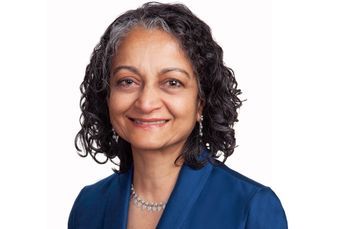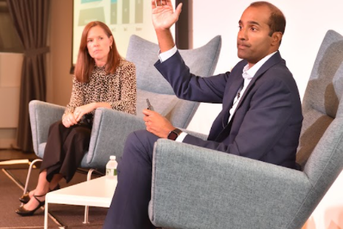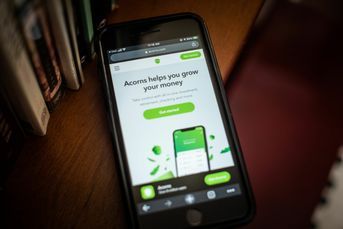Free financial planning apps enter the equation

The tools provided by big players like Fidelity and Schwab are a plus for investors just starting out, but what do they mean for smaller advisory firms?
The industry shift toward more comprehensive financial planning has encouraged big financial services firms to introduce free apps to cash in on the increased investor demand for better and more holistic financial advice. While the apps provide a no-cost avenue for retail investors to access plans, the digital tools could also diminish the need for traditional advisers and the key services they provide to their clients.
Fidelity, Charles Schwab and Bank of America have all launched free financial planning applications in recent months to take advantage of the need for better software. The move not only provides free advice to new investors, but gives the companies the possibility of cross-selling products to their customers and increasing their wallet share.
With a new wave of young investors seeking out financial advice, firms are looking to move into digital planning and extract value. Fidelity Investments, for one, is using its free mobile app to capture that potential clientele.
“Fidelity Spire is not meant to be a one-time interaction,” Kelly Lannan, the company’s vice president of young investors, said when the product was announced in July. “The app has an educational hub with content related to those longer-term goals … the app can be that first step to developing a lifetime relationship with these clients.”
Bank of America’s Life Plan app, which launched last month, may also funnel clients into additional products, particularly those consumers flirting with the idea of working with a human adviser, said Eve Varner, digital planning executive at Bank of America. The app is quickly gaining traction, with more than 475,000 customers creating digital financial plans using the tool as of mid-October.
The apps are also a clear sign that large firms are acknowledging that demand is shifting from a focus on investments to increased awareness of overall financial planning and wellness. While the tools provide obvious advantages to clients, some registered investment advisers expressed concern that financial planning — a value proposition for many traditional planners — could become digitized. Any further commoditization of financial planning could lead to fee compression.
It could also disproportionately benefit the wirehouses and larger broker-dealers that have the means to offer free planning services. The new services being offered by some of the largest financial services companies could also make it more difficult for smaller firms to gain new clients.
“At some point, we need to ask ourselves: How much commoditizing is enough?” said Dan Herron, an adviser at Elemental Wealth Advisors. “There needs to be balance — we all need to make a living.”
To be fair, any tool that helps spread financial literacy and knowledge is a good thing for consumers, but only if the value it provides is worthwhile, said Jake Morris, financial planner and founder of Fun Financial.
“If the apps are treating people and their portfolios like an algorithm, then I don’t see that as being empowering for consumers,” he said. “I see that as a repackaging of sales products by the brokerage industry.”
Advisers have also compared the planning apps to digital health exams that patients have used during the pandemic.
“Even if we could all run affordable self-diagnostic medical exams at home, don’t you think we would likely be better off having a trained doctor interpret the results and provide recommendations?” said Ryan Phillips, founder of GuidePoint Financial Planning.
To many advisers, the tools are more like a WebMD solution than real guidance from certified financial planners.
PROS AND CONS
The pros and cons of the commoditization of financial planning software and its impact on the industry have advisers in the cross hairs. On one side, offering free access to financial planning does remove the barrier of entry for young investors starting their financial journey who don’t have significant assets.
Wealth managers can certainly bring in potential clients by giving away the free technology, then ramp up to full-service offerings as assets grow. Clients who were introduced to wealth management via a free service will likely transition to human advice once their needs become more sophisticated, said Dennis Nolte, vice president at Seacoast Investment Services.
If the free software is all the value that an end user needs, the financial professional wouldn’t have been useful to the client anyway, he said.
“If a planner is depending on his future client base being uninterested or uninformed about planning and investing, that’s a planner I’d never hire or transition my business to,” Nolte said.
While it’s impossible to ignore the success of other free financial service applications, advisers can also benefit from new technology.
“I don’t think advisers will be harmed by the introduction of free, direct-to-consumer platforms,” said William Trout, director of wealth management at Javelin Strategy & Research. “Advisers stand to benefit from the trend to commoditization in terms of their tech spend, as well as greater awareness of the value and centrality of planning to the investor.”
VALUE PROPOSITION
Paul Sydlansky, founder of Lake Road Advisors, said the only advisers that need to worry about the trend are those who don’t provide value outside of a basic planning offering.
“If you are providing value in other ways — such as a trusting relationship, coaching, monitoring — then you shouldn’t be worried,” he said. “Many predicted that the [robo-advisers] of the world would be bad for adviser business, but that never panned out. In fact, it has helped me build and scale my firms to levels I wouldn’t have been able to without it.”
Despite the benefits to the millions of young investors who could use free advice, not all advisers see planning software as the right tool to attract a younger clientele as the advisory community begins to debate the long-term impacts.
“An app is a collection of algorithms that is missing two key elements a planner provides: judgment and empathy,” said Nicole Wirick, president of Prosperity Wealth Strategies. “Numbers don’t lie, but there are other nonquantifiable elements of financial well-being that provide a non-calculable psychological benefit — like the peace of mind of sleeping well at night.”
Another potential downside to digital plans is the likelihood of user error. Dallas-based adviser Thomas Murphy sent free financial planning website links to four clients who were interested in financial plans. Two clients logged in and entered data. However, they both made serious errors in data entry as a result of not understanding the language of finance, he said.
“I am not concerned about free tech replacing me,” Murphy said. “I am very concerned about people thinking they have an accurate financial projection when they don’t.”
LINKING ACCOUNTS
The introduction of these new tools also underscores the oncoming trend of linking financial planning with checking and savings accounts. For example, Bank of America’s Life Plan and Fidelity’s Spire allow the user to choose goals that may be achieved with either a banking product or investment product based on the time horizon of the goal.
By increasing access to financial planning, these companies are creating a natural funnel from a free service to other offerings like digital advice products, said David Goldstone, Backend Benchmarking’s head of research.
“We see this relationship as a win-win as clients gain financial planning tools and [the firms] gain a pipeline of potential investors,” Goldstone said. “We expect this trend of banking services sitting alongside investment services to continue across incumbents and independents alike.”
In the end, clients should use caution with new apps because like most things in life, you usually get what you pay for, said Steve Zakelj, founder of Flatirons Wealth Management.
“If you’re paying nothing, the product is either not that great or in some cases, the product may be you,” Zakelj said.
Learn more about reprints and licensing for this article.








